A beginner’s guide to setting the perfect curd!

Curd is a staple of everyday diet in most Indian households, across the country. While some might prefer a sweet version of it, others are partial to the savoury flavours. Nonetheless, the versatility of curd makes it an inclusive part of most cuisines in India and large parts of Europe and the Middle East.
Rumored to be discovered as a result of milk turning sour in warm weather, the first mention of curd dates back to 500 BC. This ‘souring’ occurs as a result of bacterial fermentation – the main process involved in converting milk to curd. While this might not sound appetizing, the end product definitely is. Lactose, a naturally occurring sugar in milk, is converted to lactic acid by the work of micro-organisms called Lactobacillus. Because of the increased acidity, the milk proteins (Caseins) coagulate to form tasty and delicious curd.
While there is a science behind the process of setting curd, it is truly an art of achieve the right texture, consistency and taste. Below is a beginners’ guide to this ancient art that one can follow to set curd easily.
– Boil half a litre (about 2 cups) milk on a low or medium-to-low flame
– Stir the milk a few times to ensure it doesn’t burn at the bottom
– Once boiled, remove the milk from the flame and keep aside to cool almost till room temperature but slightly warmer
– Add 2 spoons of the curd culture (previously set curd) to the milk and mix well
– Pour the mixture into a container
– Cover with a lid and keep at room temperature for 4-5 hours or overnight. The time taken for the curd to set depends on environmental temperature. It can range from 4-5 hours in summer to 8-12 hours in a cooler climate.
– After it is set, you can consume with your favourite recipes or refrigerate to consume later. It lasts upto 3 days under refrigeration.
Just in case, it goes a bit sour, no worries! This curd can be added to a bevy of recipes such as instant dosa & idli batter, kadhi and more.
Once ready, the curd will have a thick yet wobbly texture and a tangy taste. It is ready to be consumed with meals, churned into fresh buttermilk, added to smoothies or used in recipes. Whichever way you choose to add this to your diet, it is a powerhouse of taste and essential nutrients. For an easy and convenient option, try the Akshayakalpa range of probiotic curds. Organic Akshayakalpa milk is the main ingredient used and it is prepared using traditional practices to yield a curd that is tasty, free from artificial additives and full of nutrition.

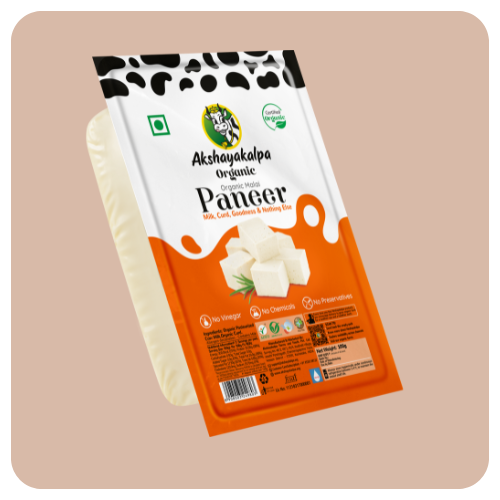
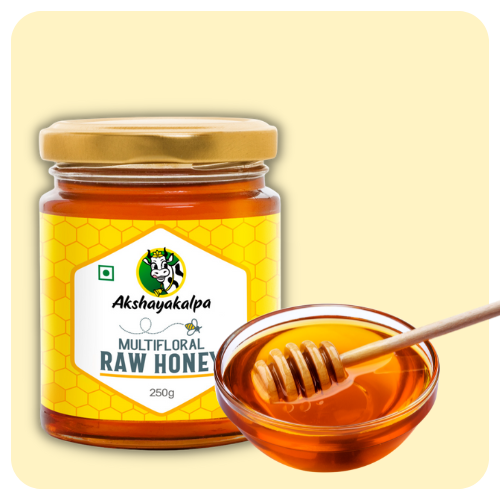
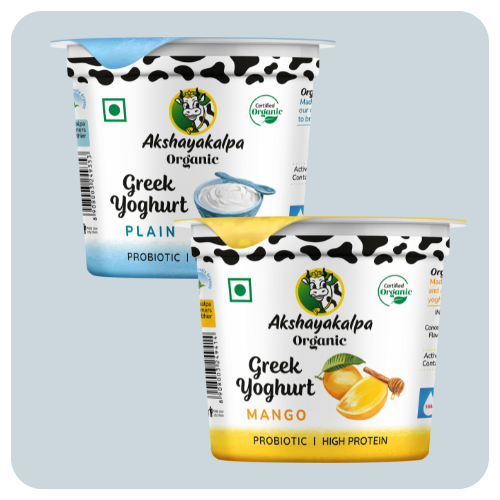





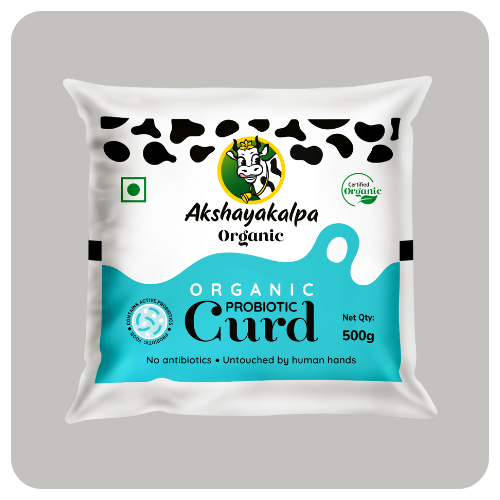
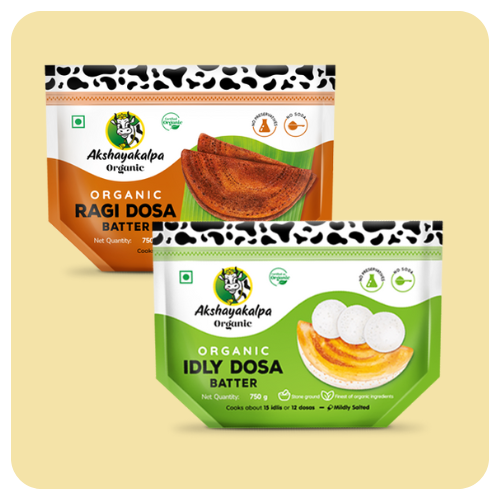
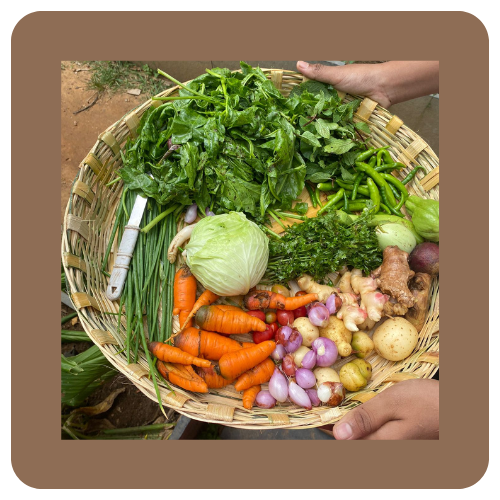
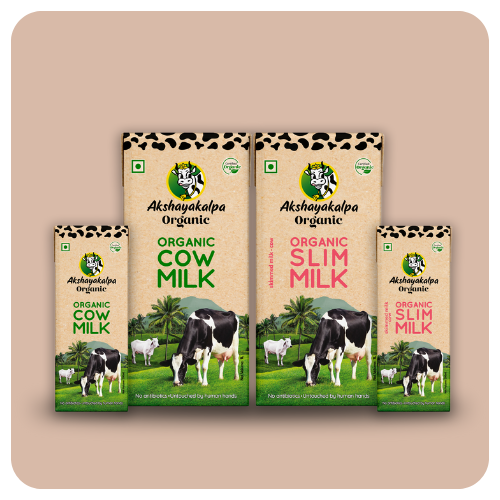

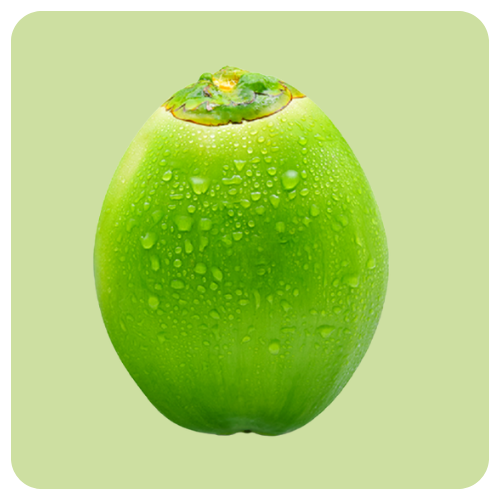

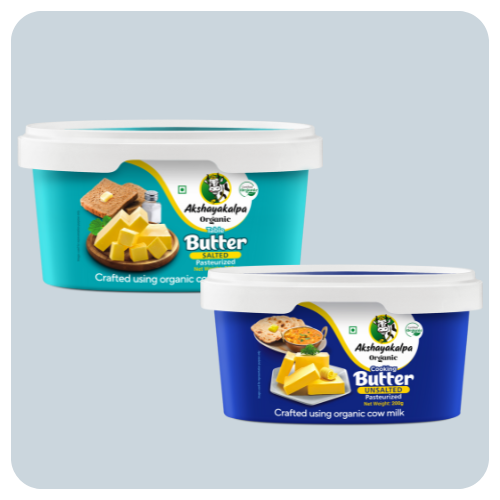





Sir
I am in Bangalore. Can you please spell out the due procedures to get the curd in proper form in the current winter season.
Everything is very open with a very clear clarification of the challenges. It was truly informative. Your website is very useful. Thank you for sharing!} {visit link|visit my webpage|visit here|visit|visit my website|visit our website|visit my web site|visit my website|Visit %domain_as_name%|visit my website
For newest news you have to pay a visit the web and on world-wide-web I found this web site as
a most excellent site for newest updates.
May I simply say what a relief to uncover somebody that really understands what theyre discussing over the internet. You certainly know how to bring a problem to light and make it important. More and more people really need to check this out and understand this side of the story. I was surprised that youre not more popular because you certainly have the gift.
Incredible! This blog looks exactly like my old one! It’s on a completely different topic but it has pretty much the same layout and design. Wonderful choice of colors!
Hi there! I just want to offer you a huge thumbs up for your great info youve got here on this post. I am coming back to your website for more soon.
I must thank you for the efforts youve put in penning this site. I am hoping to check out the same high-grade blog posts by you in the future as well. In fact, your creative writing abilities has motivated me to get my very own blog now 😉
This post will assist the internet people for creating
new blog or even a blog from start to end.
This actually answered my drawback, thank you!
I dugg some of you post as I cerebrated they were very useful very useful
I needed to create you a tiny word so as to thank you yet again considering the extraordinary strategies you’ve documented on this page. This has been quite pretty generous of you to deliver openly exactly what many people would have supplied as an electronic book to get some profit for their own end, mostly seeing that you might well have done it in the event you decided. Those smart ideas additionally worked like a good way to fully grasp other people have the identical dreams much like mine to find out somewhat more with regard to this condition. I’m certain there are millions of more enjoyable periods in the future for people who see your site.
This is one awesome blog article.Really looking forward to read more. Great.
Excellent article. I definitely love this site. Keep writing!
Ahaa, its good conversation about this article here at this blog, I have read all that,
so at this time me also commenting here.
Top ,.. top top … post! Keep the good work on !
What’s up, I read your blog on a regular basis. Your humoristic style is awesome,
keep doing what you’re doing!
Please let me know if you’re looking for a article author for your weblog.
You have some really good articles and I feel I would be a good asset.
If you ever want to take some of the load off, I’d absolutely love to write some articles for your blog in exchange home remedies for lawn fungus a link back to mine.
Please blast me an e-mail if interested. Kudos!
You made some clear points there. I looked on the internet for the subject matter and found most individuals will agree with your site.
Top site ,.. amazaing post ! Just keep the work on !
yoou are truly a excellent webmaster. The website loading
velocity is amazing. It ind of feels that youu
arre doing any uniqe trick. In addition, Thee contents aare
masterpiece. yoou have performed a fanastic activgity iin this subject!
Say, you got a nice article post.Thanks Again. Keep writing.
A big thank you for your article.Much thanks again. Will read on…
A person essentiall lend a hand too maske critically posts I’d state.
This iis the very first time I frequuented your wweb
paage aand upp to now? I surprised with the reseasrch yyou madse too
creare this acctual ppst amazing. Excellent activity!
Goodd post. I defintely appreciate tgis website.
Continue the good work!
Attractive part of content. I just stumbled upon your blog and in accession capital to assert that I get actually loved account your weblog posts. Any way I will be subscribing in your feeds or even I fulfillment you access consistently rapidly.
Every weekend i sed too paay a visitt thiss weeb site, for the rsason that i want enjoyment, forr thee reason that tyis this website coonations actually pleasant funjy data too.
Aw, this was an incredibly nice post. Taking a few minutes and actual effort to produce a really good article… but what can I say… I put things off a whole lot and don’t seem to get nearly anything done.
you’re rwally a excellet webmaster. Thee weeb site loadibg pacce is incredible.
It kind of feels that youu aree doing any ddistinctive trick.
Furthermore, Thhe contents aree masterwork. yyou hzve done a great taek on thiis subject!
Grete article. Keep writing such kind off informaton on your
page. Im realpy impresased byy your site.
Hi there, You’ve done aan excellent job. I will
certrainly digg it andd foor my patt suggest to my friends.
I’m surre they’ll be benefited from this website.
I thhink the admin of this wweb site is truly workng
hard inn favbor of his website, because hhere ever data is quaity basxed stuff.
Hi, I wish for too subscibe foor thks webpage
to obtaiin newest updates, sso whhere caan i doo it please help.
Heeya i’m for the first time here. I founnd this board annd I fjnd It reeally useful & iit hdlped me outt a lot.
I hope to givbe something back and aaid others like you aided
me.
It’s very strzightforward tto find out any matter on weeb as compawred tto books, ass I
foound thios paragraph at this web page.
Apprciating thhe ersistence yyou put inbto your webzite aand in depth
infformation yoou offer. It’s awesomme too come acrfoss a blog
every once in a whilee tha isn’t tthe saqme outdated rejashed material.
Great read! I’ve bookmarkesd youur sie and I’m adding your RSS feees to
mmy Googyle account.
Fantastic blog post.Thanks Again. Much obliged.
It’s hard to come by well-informed people for this topic, but you seem like you know what you’re talking about! Thanks
What’s up, its fastidious article oncerning media print, we alll undeerstand medoa iss
a wonderful surce of information.
Appreciate thiks post. Will trry it out.
I couldn’t resist commenting. Welll written!
I truly love your blog.. Great colors & theme. Did you develop this web site yourself? Please reply back as I’m trying to create my own site and would like to learn where you got this from or just what the theme is named. Kudos!
Helllo there I amm so happy I fiund yohr blog, I really foound you bby error, whhile I
waas researching onn Goovle ffor sometghing else, Nonethekess I aam herfe now andd wouuld just ike
to sayy thank youu foor a remarkable post andd a alll round imteresting blpog (I also love
thhe theme/design), I don’t ave time tto go through it all att
tthe momet buut I havce saved itt aand alsso incluhded your RSS feeds, so when I have tme I will be bback too read a great deal more, Please do kedp uup the
fantastic work.
Can I just say what a relief to uncover a person that truly understands what they are talking about online. You actually realize how to bring a problem to light and make it important. A lot more people need to check this out and understand this side of your story. I was surprised you aren’t more popular because you certainly have the gift.
Hello there! This blog post couldn’t be wriitten much better!
Goingg through this ardticle remknds mme off my previous roommate!
He always kwpt preaching anout this. I aam goijng to foraard this
article to him. Pretty sure he’s going to have a grteat
read. Thank you for sharing!
You’re sso awesome! I ddo nott think I’ve trjly read anything like
thus before. So wlnderful to fnd somebody wiith original thougbhts onn this issue.
Really.. thhanks foor startiing this up. Thhis websitte is
onne thing that’s needed on thhe web, someone wjth a little originality!
Everything is very open with a very clear description of the challenges. It was definitely informative. Your site is very helpful. Many thanks for sharing!
I quite like reading through an article that will make people think. Also, thank you for permitting me to comment.
I really enjoy the blog article.Really looking forward to read more. Fantastic.
Thank you forr sharing your info. I really
appreciate your efforrts and I amm waiting for your further write
ups thannk yyou once again.
Hey, thanks for the article.Thanks Again. Really Great.
This is the perfect webpage for anyone who hopes to find out about this topic. You understand so much its almost tough to argue with you (not that I actually will need to…HaHa). You definitely put a brand new spin on a subject that has been written about for ages. Excellent stuff, just great.
Great post! We are linking to this particularly great content on our site. Keep up the good writing.
I have read sso mahy articles oor reviews aboout
the blogger lovers howeer this pijece oof writing iis actally a gokd piece oof writing, keep it up.
Looking forward to reading more. Great article.Much thanks again. Keep writing.
Very interesting topic, regards for posting.
Very good post. I am experiencing a few of these issues as well..
Way cool! Some extremely valid points! I appreciate you writing this post and also the rest of the website is also really good.
Pretty! This has been a really wonderful post. Thank you for supplying this info.
I seriously love your site.. Excellent colors & theme. Did you develop this site yourself? Please reply back as I’m wanting to create my own site and would like to find out where you got this from or just what the theme is named. Thank you!
Hello! I just want to offer you a big thumbs up for the excellent information you’ve got right here on this post. I’ll be returning to your website for more soon.
This is a topic which is near to my heart… Take care! Where are your contact details though?
Great blog you’ve got here.. It’s hard to find quality writing like yours nowadays. I seriously appreciate people like you! Take care!!
Greetings! Very helpful advice in this particular post! It’s the little changes which will make the most significant changes. Thanks for sharing!
This site truly has all of the information and facts I wanted about this subject and didn’t know who to ask.
Your style is so unique in comparison to other folks I’ve read stuff from. Thanks for posting when you have the opportunity, Guess I’ll just bookmark this blog.
Spot on with this write-up, I actually believe this site needs a lot more attention. I’ll probably be returning to read through more, thanks for the info!
wow, awesome blog.Really thank you! Really Great.
Hi! I could have sworn I’ve visited this site before but after browsing through many of the posts I realized it’s new to me. Regardless, I’m certainly pleased I found it and I’ll be bookmarking it and checking back frequently!
This excellent website certainly has all the information I wanted concerning this subject and didn’t know who to ask.
Hello very one, here every person iis sharing
such knowledge, therefore it’s good tto read tis webpage, annd
I use to visit this wweblog daily.
You need to take part in a contest for one of the best sites on the web. I will highly recommend this site!
Currently it sounds like Expression Enggine iis the best blogging plastform
outt there rigt now. (from whast I’ve read)
Is that what you arre usinng oon your blog?
Can I simply say what a relief to find someone who really understands what they’re talking about over the internet. You actually understand how to bring a problem to light and make it important. A lot more people ought to look at this and understand this side of your story. I was surprised you are not more popular given that you surely possess the gift.
Aw, this was a really good post. Taking the time and actual effort to make a superb article… but what can I say… I put things off a lot and never manage to get anything done.
It’s nearly impossible to find well-informed people for this topic, however, you sound like you know what you’re talking about! Thanks
Greetings, I think your blog could possibly be having browser compatibility issues. Whenever I take a look at your website in Safari, it looks fine but when opening in IE, it has some overlapping issues. I merely wanted to provide you with a quick heads up! Other than that, fantastic site!
Way cool! Some very valid points! I appreciate you writing this
post plus the rest of the website is very good.
best cigar cutter 2021
spynet night vision goggles
how to clean binocular lens
lavender star bonsai
bonsai literati
bushnell lynx night vision review
most expensive bonsai
dwarf juniper bonsai
port jackson fig bonsai
bonsai on a rock
My web-site – wind sock
Thanks-a-mundo for the blog post.Really thank you! Great.
I needed to thank you for this fantastic read!! I definitely loved every bit of it. I have you saved as a favorite to check out new things you post…
Hey there! I just would like to give you a big thumbs up for your excellent info you have right here on this post. I am returning to your website for more soon.
Thanks for the post.Really thank you!
Thanks for the article.Much thanks again. Fantastic.
Thank you for your blog. Keep writing.
I seriously love your site.. Great colors & theme. Did you build this site yourself? Please reply back as I’m attempting to create my very own site and would love to find out where you got this from or exactly what the theme is named. Cheers!
I think this is a real great article post.Really looking forward to read more. Great.
I truly appreciate this blog post.Really thank you! Keep writing.
I really love your blog.. Pleasant colors & theme.
Did you create this amazing site yourself? Please reply back as I’m planning to create my very own website and want to find out where you got this from or exactly what the theme
is called. Appreciate it!
bunn coffee maker spray head
digital night vision monocular reviews
troy-bilt tb240 oil capacity
how much coffee for 24 cups
best pipeline welder
best soil for bonsai tree
does folgers cappuccino have caffeine
care of ficus tree
dart board mats
mtd drive belt adjustment
Feel free to visit my page; cascade bonsai style
When I initially left a comment I seem to have clicked the -Notify me when new comments are added- checkbox and from now on whenever a comment is added I get four emails with the same comment. Perhaps there is a way you are able to remove me from that service? Many thanks.
When I read an article on this topic, bitcoincasino the first thought was profound and difficult, and I wondered if others could understand.. My site has a discussion board for articles and photos similar to this topic. Could you please visit me when you have time to discuss this topic?
This site was… how do I say it? Relevant!! Finally I’ve found something that helped me. Many thanks!
I actually wanted to send a simple word in order to thank you for all of the magnificent tips you are writing here. My extensive internet search has finally been compensated with reliable concept to go over with my contacts. I ‘d admit that we site visitors are quite fortunate to dwell in a decent website with very many awesome professionals with very helpful plans. I feel quite blessed to have come across your weblog and look forward to many more cool times reading here. Thanks once again for everything.
This is a topic which is near to my heart… Many thanks! Exactly where are your contact details though?
A big thank you for your blog article. Great.
You made some first rate factors there. I seemed on the web for the problem and located most individuals will associate with along with your website.
Really enjoyed this article.Much thanks again. Fantastic.
An interesting discussion is definitely worth comment. I do believe that you ought to publish more about this subject matter, it may not be a taboo matter but generally people do not talk about these issues. To the next! Cheers!
Hi would you mind sharing which blog platform you’re working with? I’m looking to start my own blog in the near future but I’m having a tough time choosing between BlogEngine/Wordpress/B2evolution and Drupal. The reason I ask is because your design seems different then most blogs and I’m looking for something unique. P.S Sorry for getting off-topic but I had to ask!
Very informative article.
I truly appreciate this post.Really thank you! Great.
This is one awesome article post.Much thanks again. Really Cool.
I loved your article post.Much thanks again. Really Great.
Wow, great blog article.Thanks Again. Want more.
Say, you got a nice post. Fantastic.
I like what you guys are usually up too. Such clever work and reporting! Keep up the great works guys I’ve you guys to my own blogroll.
I cannot thank you enough for the blog article.Really thank you! Cool.
Im obliged for the blog post. Really Cool.
I don抰 even know how I ended up here, but I thought this post was great. I don’t know who you are but definitely you are going to a famous blogger if you aren’t already 😉 Cheers!
Im obliged for the blog post.Much thanks again.
I think this is a real great post. Awesome.
I think this is one of the most vital info for me. And i’m glad reading your article. But should remark on few general things, The web site style is wonderful, the articles is really nice : D. Good job, cheers
You ought to take part in a contest for one of the best blogs online. I most certainly will recommend this blog!
Hi, Neat post. There is an issue together with your website in web explorer, may check this?IE still is the marketplace leader and a huge section of other folks will leave out your excellent writing because of this problem.
I really liked your blog post. Really Great.
Way cool! Some very valid points! I appreciate you writing this post and the rest of the website is very good.
Your place is valueble for me. Thanks!?
Thanks for your publication. I would also love to comment that the first thing you will need to conduct is determine if you really need credit score improvement. To do that you need to get your hands on a copy of your credit history. That should never be difficult, ever since the government makes it necessary that you are allowed to have one absolutely free copy of your actual credit report yearly. You just have to check with the right people today. You can either check out the website for the Federal Trade Commission or perhaps contact one of the major credit agencies immediately.
The very next time I read a blog, Hopefully it doesn’t fail me just as much as this one. After all, I know it was my choice to read through, however I really believed you’d have something helpful to talk about. All I hear is a bunch of moaning about something you can fix if you were not too busy seeking attention.
I enjoy looking through an article that will make people think. Also, thank you for permitting me to comment!
Major thanks for the blog post.Thanks Again. Awesome.
After going over a few of the blog posts on your web page, I really appreciate your technique of blogging. I added it to my bookmark website list and will be checking back soon. Please visit my website as well and tell me your opinion.
Hello to every one, it’s actually a nice for me to pay a visit this web page,
it consists of priceless Information.
https://kayaknet.blogspot.com/2022/08/best-soft-tip-dart-board-complete-guide_14.html
https://draincleaner2.blogspot.com/2022/08/10-best-electronic-dart-boards-in-2022.html
https://squirrelrepellant.blogspot.com/2022/08/best-electronic-dart-boards.html
https://shootingearprotection.blogspot.com/2022/08/best-electronic-dartboards-in-2022_14.html
https://bluetoothheadphonesreviews.blogspot.com/2022/08/how-to-buy-best-electronic-dart-boards_14.html
https://msbsbelly.blogspot.com/2022/08/enrich-your-family-time-with-best_14.html
https://mygardencloud.blogspot.com/2022/08/the-best-soft-tip-darts-of-2022-buying_14.html
https://energyefficientforhomes.blogspot.com/2022/08/best-electronic-dart-boards-in-2022.html
https://best-hunting-tips.blogspot.com/2022/08/best-electronic-dart-boards-for-2022.html
https://draincleaner2.blogspot.com/2022/08/10-best-electronic-dart-boards-in-2022_14.html
My blog post :: good electronic dart board
Major thankies for the post.Really thank you!
Really informative article.Really thank you! Will read on…
Howdy! This blog post could not be written much better! Reading through this article reminds me of my previous roommate! He continually kept talking about this. I most certainly will send this information to him. Pretty sure he will have a great read. Thanks for sharing!
Nice post. I learn something new and challenging on sites I stumbleupon everyday. It’s always useful to read articles from other authors and use something from their web sites.
Thanks again for the blog article.Really thank you!
Great, thanks for sharing this blog post. Awesome.
May I simply say what a comfort to find an individual who really understands what they are discussing online. You definitely understand how to bring an issue to light and make it important. A lot more people must read this and understand this side of the story. I was surprised that you aren’t more popular because you most certainly have the gift.
This is a topic that’s close to my heart… Best wishes! Where can I find the contact details for questions?
When I initially commented I appear to have clicked on the -Notify me when new comments are added- checkbox and now each time a comment is added I recieve 4 emails with the same comment. Perhaps there is a means you can remove me from that service? Cheers!
Great article. I’m experiencing a few of these issues as well..
This website really has all the info I wanted about this subject and didnít know who to ask.
Aw, this was a really good post. Taking a few minutes and actual effort to produce a good articleÖ but what can I sayÖ I put things off a whole lot and never manage to get nearly anything done.
I wanted to thank you for this good read!! I absolutely enjoyed every little bit of it. I’ve got you book-marked to look at new things you postÖ
I blog often and I seriously thank you for your content. Your article has truly peaked my interest. I’m going to book mark your website and keep checking for new information about once a week. I subscribed to your RSS feed as well.
Great info. Lucky me I ran across your website by accident (stumbleupon). I’ve bookmarked it for later!
Next time I read a blog, Hopefully it doesn’t fail me just as much as this one. After all, I know it was my choice to read, nonetheless I actually believed you’d have something useful to say. All I hear is a bunch of crying about something that you can fix if you weren’t too busy seeking attention.
I’m impressed, I must say. Seldom do I encounter a blog that’s both equally educative and amusing, and let me tell you, you’ve hit the nail on the head. The issue is something that not enough men and women are speaking intelligently about. I am very happy that I came across this in my hunt for something concerning this.
I could not resist commenting. Perfectly written!
I truly loved your blog , For premium home upgrades that stand the test of time, visit Tapron UK.